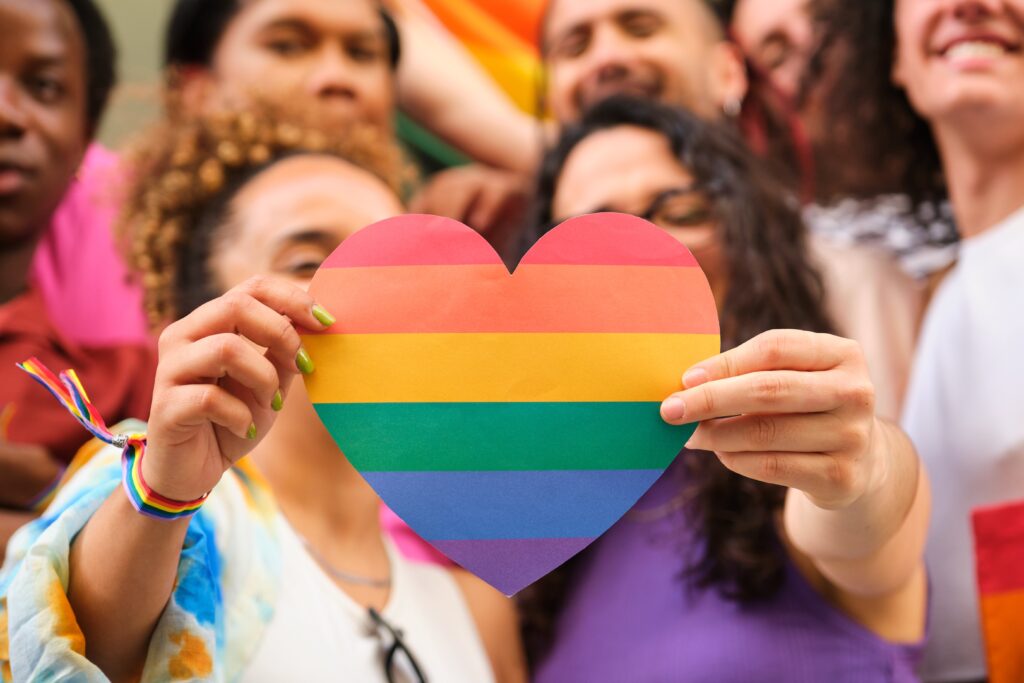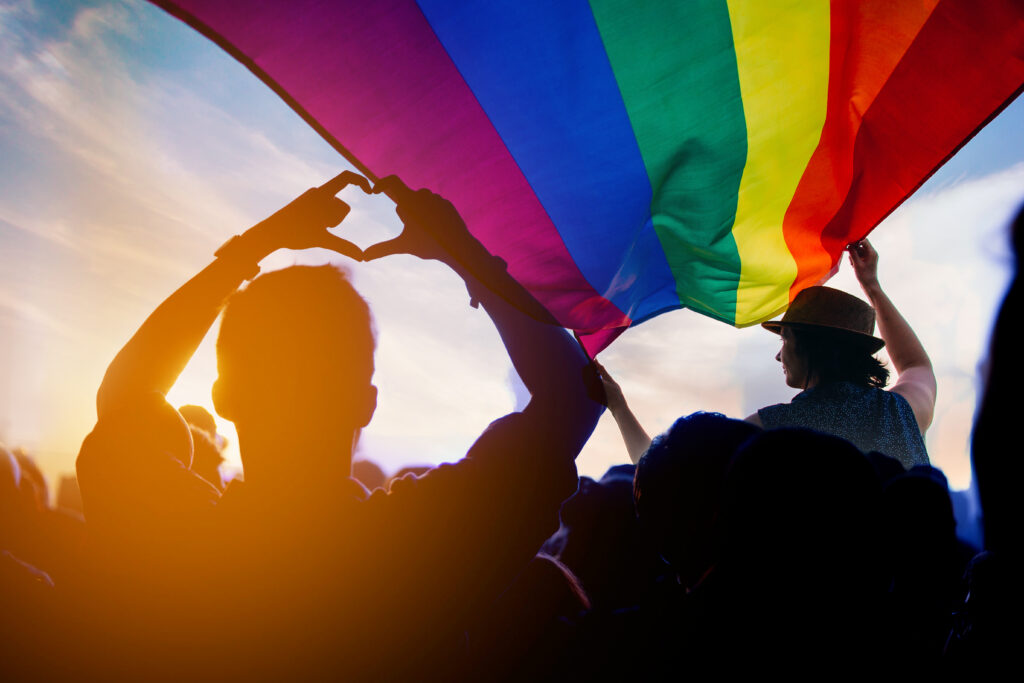Your cart is currently empty!
People all over the world are now coming out as ‘symbiosexual’

The landscape of human attraction and identity is more diverse and fluid than ever before. While traditional labels like “gay,” “straight,” and “bisexual” have long defined the boundaries of sexual orientation, new and intriguing identities are beginning to emerge. Among these is a unique form of attraction that challenges our conventional understanding of desire—a pull not toward a single person, but to the dynamic energy between two people as a couple. As younger generations increasingly identify outside the traditional norms, a deeper understanding of these evolving attractions is essential for fostering a more inclusive world. What does it mean to be drawn to the connection between others, and how is this reshaping our views on love and identity?
New Forms of Attraction: Symbiosexuality and Beyond
Recent studies have introduced a new dimension to the understanding of human attraction: “symbiosexuality.” This term describes a form of attraction where individuals are drawn not to single persons but to the collective energy and dynamics of a couple’s relationship. The concept was first identified in a study led by Dr. Sally W. Johnston, a professor of anthropology and sociology at Seattle University. Her research, published in the Archives of Sexual Behavior, explored how people can be attracted to the “energy, multidimensionality, and power” shared between two people in a committed relationship.
Dr. Johnston’s study analyzed data from The Pleasure Study, which involved 373 participants. Of these, 145 reported feeling an attraction to the synergy or “third force” within a couple rather than to the individuals themselves. Participants described this attraction as a desire to be part of the emotional and sexual dynamic between the couple, rather than pursuing a one-to-one relationship. This type of attraction is particularly noted among queer and polyamorous communities, though it is not limited to them.
For example, one participant in the study mentioned feeling drawn to the “cohesiveness” and the mutual energy between a couple, noting how their connection created an alluring interplay. Another participant expressed a desire to be “smack in the middle” of a relationship, suggesting an ideal dynamic involving themselves and a couple. These accounts highlight how symbiosexual individuals often describe themselves as extroverted, craving intimacy, care, and attention, and being less prone to jealousy in relationships.
Dr. Johnston’s findings also reveal that this form of attraction can challenge traditional notions of desire and sexuality. Symbiosexuality brings to light the complexity and diversity of human attraction, suggesting that it may not always fit into conventional frameworks of sexual orientation. The study also calls for more research to further understand this attraction’s prevalence in the general population and its potential impact on mental health and relationship satisfaction. As symbiosexuality challenges the mononormative (one-to-one relationship) perspective, it opens up new conversations around how we perceive and validate diverse experiences of love and attraction in both monogamous and non-monogamous contexts.

Growing LGBTQ+ Identification Across Generations
Over the past decade, the number of U.S. adults identifying as LGBTQ+ has more than doubled, a trend that underscores a significant shift in how people understand and express their sexual orientation. According to recent Gallup data, 7.6% of U.S. adults now identify as LGBTQ+, up from 3.5% in 2012. This increase is largely driven by younger generations, particularly Generation Z and millennials, who are far more likely to identify outside traditional heterosexual norms than older generations.
The data reveals that more than one in five Gen Z adults (22.3%) identify as LGBTQ+, compared to nearly one in ten millennials. In contrast, less than 5% of Generation X and only 2% of baby boomers identify as LGBTQ+. These generational differences suggest that societal acceptance, cultural shifts, and increased visibility have made it easier for younger people to explore and express their identities openly.
Bisexuality is the most common LGBTQ+ identity across these younger generations, especially among women. Nearly 30% of Gen Z women identify as LGBTQ+, with bisexuality being the predominant form. This figure contrasts sharply with Gen Z men, where around 10.6% identify as LGBTQ+. These numbers reflect a growing recognition and acceptance of diverse sexual orientations, contributing to the overall rise in LGBTQ+ identification across all age groups.
As this trend continues, it is anticipated that LGBTQ+ identification will exceed 10% of U.S. adults within the next few decades. This evolving landscape points to a future where diverse sexual orientations become increasingly normalized, further reshaping social norms and expectations around identity and attraction.
This data aligns with findings from various studies, indicating that younger generations are not only more open about their sexual orientation but are also more likely to challenge traditional labels and frameworks of identity. This shift calls for continued research and dialogue to understand the changing dynamics of sexual orientation across generations and the factors influencing these trends.
Resilience and Challenges of LGBTQ+ Individuals
LGBTQ+ individuals face unique challenges that can have significant impacts on their mental and physical health. However, resilience plays a critical role in mitigating these negative outcomes, particularly among youth. Research from The Trevor Project shows that higher resilience is consistently linked to better mental health outcomes for LGBTQ+ youth, including reduced risks for anxiety, depression, and suicide attempts. For instance, LGBTQ+ youth with high resilience have 59% lower odds of attempting suicide and 79% lower odds of experiencing recent depression compared to those with lower resilience levels.
Resilience is defined by the American Psychological Association as the ability to adapt well in the face of adversity, trauma, or stress. For LGBTQ+ individuals, factors contributing to resilience include supportive family environments, affirming schools, and strong community connections. Studies show that LGBTQ+ youth who have affirming families and attend supportive schools exhibit higher resilience, which is associated with significantly lower rates of anxiety, depression, and suicidal ideation.
On the other hand, many LGBTQ+ individuals still face substantial challenges, such as discrimination, stigma, and violence. These experiences are linked to higher levels of mental health issues, including anxiety and depression. During the COVID-19 pandemic, for example, research by Georgia Tech highlighted how LGBTQ+ adults demonstrated resilience through creative coping strategies, such as maintaining social connections and re-evaluating their relationships with work and life priorities. This resilience, while commendable, also underscores the ongoing need for systemic changes to address the underlying social and structural barriers that contribute to the marginalization of LGBTQ+ individuals.
Additionally, fostering resilience is not just about individual effort; it involves community support, affirmative policies, and inclusive environments that can buffer against the adverse effects of discrimination. Efforts to promote resilience must be coupled with advocacy for systemic changes to ensure that LGBTQ+ individuals are not forced to develop resilience merely to survive but are empowered to thrive in a society that values and accepts their identities.

Creating Inclusive and Affirmative Spaces
Inclusive and affirmative spaces are crucial for the well-being and mental health of LGBTQ+ individuals, particularly youth. These environments—whether in schools, homes, workplaces, or communities—provide a sense of safety, acceptance, and belonging that significantly reduces the risk of adverse mental health outcomes. Research indicates that LGBTQ+ youth who have access to at least one affirming space experience a 35% reduction in the odds of attempting suicide, highlighting the profound impact of supportive environments.
Schools are one of the most influential spaces, with 62% of LGBTQ+ youth reporting their school as affirming, which is associated with the strongest reduction in suicide attempts. Other spaces, such as affirming homes, workplaces, and community events, also play a vital role in fostering mental health and reducing risks. For transgender and nonbinary youth, access to gender-affirming spaces further decreases the likelihood of suicide attempts, underscoring the importance of inclusive environments tailored to diverse identities.
Beyond physical spaces, the role of community centers, queer-specific forums, and online platforms cannot be understated. These spaces provide essential support networks, offering resources from health services to counseling and advocacy. They enable LGBTQ+ individuals to connect, share experiences, and find solidarity, even in the absence of local support. This sense of community is vital for fostering resilience and promoting mental and emotional well-being.
Creating inclusive spaces involves more than just providing physical safety; it requires active efforts to challenge discrimination, support diverse identities, and build a culture of acceptance. Schools and workplaces can adopt policies that explicitly protect LGBTQ+ rights, while mental health providers and community organizations can offer affirmative care that recognizes and celebrates the diversity of LGBTQ+ experiences. This approach ensures that everyone, regardless of their sexual orientation or gender identity, feels valued, respected, and empowered to thrive.
Embracing Evolving Understandings of Attraction and Identity
As our understanding of human attraction and identity continues to evolve, it becomes increasingly important to recognize and validate diverse experiences. The emergence of new concepts like “symbiosexual” attraction challenges traditional views on desire, suggesting that attraction can extend beyond the individual to the unique dynamics between people. At the same time, the growing number of LGBTQ+ individuals, particularly among younger generations, signals a shift toward a more open and inclusive society.
However, this progress is not without its challenges. LGBTQ+ individuals continue to face significant obstacles, including discrimination, stigma, and mental health struggles. Yet, the resilience demonstrated by this community—especially when supported by inclusive and affirmative environments—offers hope for a future where diversity is celebrated, and everyone feels empowered to express their true selves.
To achieve this vision, it is crucial to create spaces that affirm all identities, foster community connections, and promote understanding and acceptance. By doing so, we can support not only the well-being of LGBTQ+ individuals but also the broader goal of a more inclusive and empathetic society.
